THARTII (L.P.Hébert) Niederle, 2014
Synonyms :
Sedum montanum ssp. orientale 't Hart (1978)
Sedum thartii L.P.Hébert (Feb 1984).
Petrosedum orientale ('t Hart) Grulich (Apr 1984)
Sedum pseudorupestre Gallo & Bracchi (2005)
Distribution : Eastern Alps (Austria, Slovenia, Switzerland, Italy).
Description (according to IHSP, 2003) :
Differs from P. montanum :
Whole plant more robust.
Flowers : Sepals triangular-lanceolate, acuminate, 3 - 4 mm, filaments usually densely papillose at the base.
Cytology : 2n = 98.
This species is a fully fertile allopolyploid of diploid P. montanum (2n = 34) and tetraploid P. erectum (2n = 64) through polyploidization. It is rather an aggressive grower and quite common in gardens in NW Europe, where it is most often confused with P. rupestre ('t Hart 1978).
Sedum montanum Songeon & E. P. Perrier ssp. orientale ‚t Hart, S. thartii L. P. Hébert and S. pseudorupestre Gallo & Bracchi
When Henk ’t Hart published S. montanum ssp. orientale in his doctoral thesis in 1978, he thought hybridisation between S. montanum and S. rupestre ssp. erectum might have played a part in its evolution, but was not absolutely certain. He placed it under the species it most resembled morphologically, S. montanum. Later (’t Hart, 1994) he was definite that hybridisation had been involved, but did not change the nomenclature.
L.P. Hébert decided to do this in 1983 and published the new name Sedum thartii for S. montanum ssp. orientale. The Code treats allopolyploids nomenclaturally as though they are botanical taxa.
Unlike ‘t Hart, Hébert considered it to be a hybrid between S. sediforme and S. montanum. Because Hébert suggested a different parentage, Gallo and Bracchi (2005) rejected the name S. thartii as not applicable to this taxon, and replaced it by the new name S. pseudorupestre.
However, both S. thartii and S. pseudorupestre were stated to be based on S. montanum ssp. orientale, which means they are based on the same type. According to Art. H.10. N.2 of the current Code it is the type which is decisive and any change of parentage is of secondary importance. Thus under Art. 52.1, S. pseudorupestre was nomenclaturally superfluous when published and illegitimate. The valid name for the S. montanum ssp. orientale when treated as a species is S. thartii, the earliest valid and legitmate name in the rank of species. Gallo later implicitly accepted this view when he gave priority to S. thartii in a later paper (Gallo, 2009).
References :
Hart, H. ’t, 1978: Biosystematic studies in the Acre-group and the series Rupestria Berger of the genus Sedum L. (Crassulaceae). – Utrecht.
Ham van, R. C. H. J. & Hart, H. ’t, 1994: Evolution of Sedum series Rupestria (Crassulaceae): evidence from chloroplast DNA and biosystematic data in: phylogenetic implications of chloroplast DNA variation in the Crassulaceae. – CIP-Gegevens Koninklijke Bibl., Den Haag: 41-62. – Utrecht.
Hébert, L.P., 1984: Analyse d’un complexe chromosomique en méditerranée: Sedum ser. Rupestria Berger emend. Revue de Cytologie et de Biologie Végétales – Le Botaniste, Paris, 6(3-4) : 179-224. 1983 [publication delayed till Feb 1984].
Gallo, L., 2009: Sedum ser. Rupestria Berger (Crassulaceae): work in progress toward a checklist of taxa and their distribution – in Bocconea 23: 203-205.
Gallo, L. & Bracchi, G., 2005: Sedum pseudorupestre Gallo, nomen novum per S. montanum Songeon & Perr. subsp. orientale ‘t Hart (Crassulaceae) – in: Atti Soc. it. Sci. nat. Museo civ. Stor. nat. Milano, 146 (I): 49-51, Giugno 2005.
Niederle, J. 2014: Co je doopravdy Sedum rupestre 1., Skalničkářův rok 69: 55-57. Klub Skalničkářů, Brno.
Plant in cultivation / Plante en culture.
More vigorous and with a less prostrate habit than P. montanum.
Plus vigoureuse et avec un port moins prostré que P. montanum.
June / juin 2012, Port de Bouc - France - Bouches du Rhône)
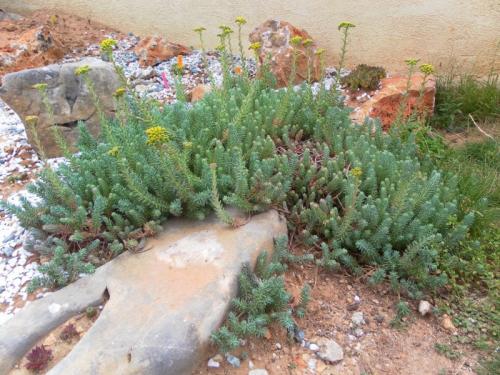
Inflorescence in bud erect / Inflorescence en bouton érigée :
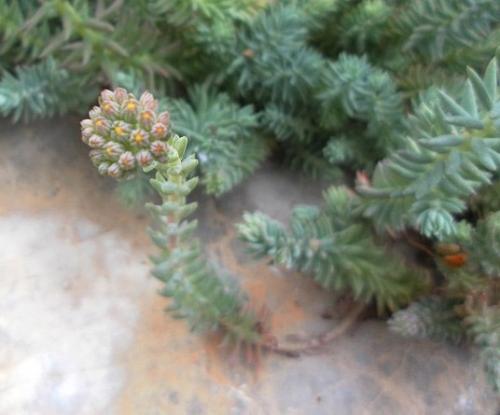
Sepals shorter than those of P. montanum / Sépales plus courts que P. montanum :
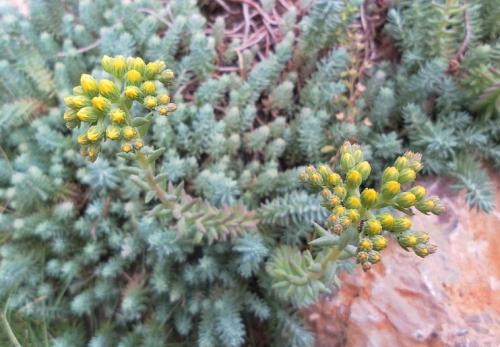
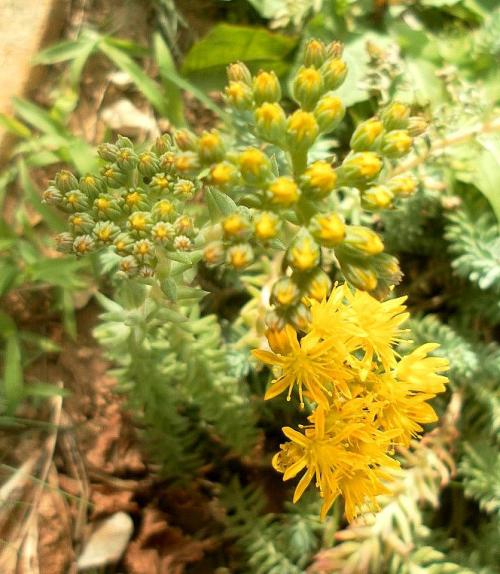
End of flowering / Fin de floraison :
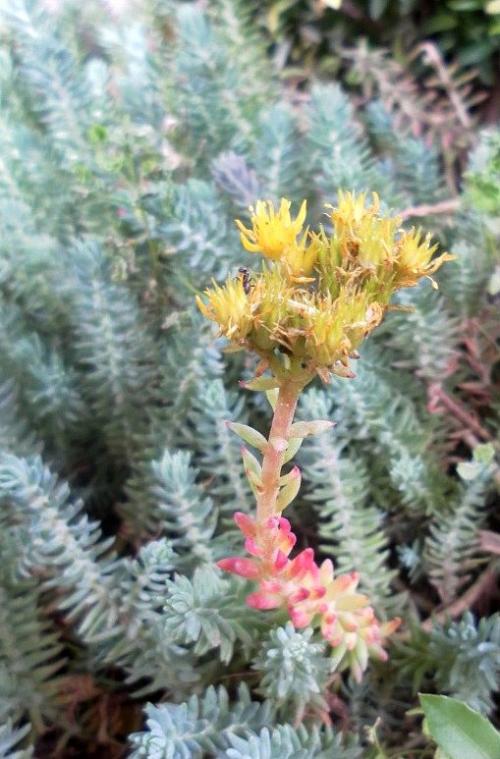
Petrosedum thartii ‘Blue Spruce’ (aka ‘Blue Feather’ in Australia) :
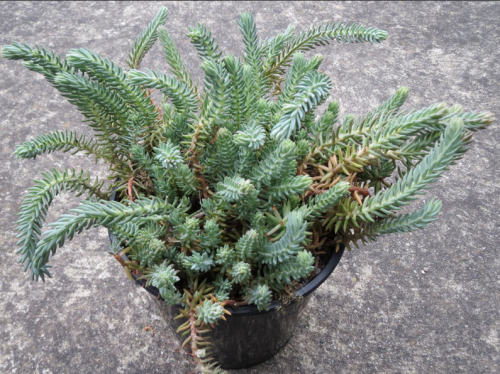
Photo Noelene Tomlinson